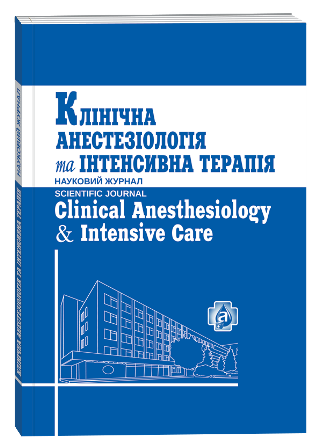STUDY OF THE RELOGIOUS PROPERTIES OF TOTAL BLOOD, FROM THE POINT OF VIEW OF PHYSICAL PRINCIPLES OF THE METHOD OF THE LOWFREQUENCY PIEZOELECTRIC THROMBOELAASTOGRAPHY (LPTEG)
DOI:
https://doi.org/10.31379/2411.2616.13.1.4Keywords:
rheology, non-Newtonian fluid, whole blood coagulation, numerical simulation, blood viscosity dynamicsAbstract
The article describes the physical basis of the low-frequency parameter of piezotromboelastography for studying the viscous properties of blood and its use for the diagnosis of hemostatic potential. A mathematical model of ultrasonic vibrations in a viscous fluid has been developed. The ARP-01M “Mednord” piezotromboelastograph was used to conduct experiments on the modem of the piezoelectric sensor and its applicability in measuring the dynamics of the viscous properties of whole blood. It is shown that a piezoelectric sensor provides optimal operation modes when a resonator needle is configured in the form of a straight rod with a loop. The maximum sensitivity in measuring the amplitude-frequency characteristics of a signal on a registered piezoelectric element is observed at 2950 kHz. A numerical experiment was conducted to study the effect of a viscous state on the change in the amplitude-frequency characteristics of oscillations of the needleresonator of a piezoelectric transducer, taking into account the force of viscous friction. As an example, the viscous properties of water and glycerin are used. The calculations were carried out for the two specified limiting cases of viscous force, which include the interval of change in the strength of the viscosity of whole blood in the coagulation process. It is shown that the method has sufficient sensitivity and, therefore, accuracy, to changes in blood viscosity and the dynamics of their changes during coagulation.
References
Kevin J. Glaser and Richard L. Ehman. //In S.K. Venkatesh and R.L. Ehman (eds.). Magnetic Resonance Elastography. – New York. – 2014. – Vol. XII. – P. 3‑18.
Tarabrin, O.A. Low freguency hemoviscoelastography – new method diagnostics coagulation disorders after surgery / Tarabrin O.A. // Intensive care medicine. – 2006. – Vol. 32, № 1. – P.64.
New technology of oral anticoagulants pharmacodynamics (acting) assessment / Tyutrin I.I., Udut V.V., Solov’ev M.A., Tarabrin O.O. // Clinical Anesthesiology & Intensive Care. – 2015. – Vol. 5, № 1. – Р. 44–51.
Cardenas J.C., Rein-Smith C.M., Church F.C. //Encyclopedia of Cell Biology. – 2016. Vol. 1. – P. 714–722.
Palta S., Saroa R., Palta A. //Indian J. Anaesth. – 2014. – Vol. 58. – №. 5. – P. 515–523.
Versteeg H.H., Heemskerk J.W.M., Levi M. et al. //Physiol Rev. – 2013. – Vol. 93. –P.327–358.
Huang C-C, Lin Y-H, Liu T-Y et al. // J. Med. Biol. Eng .– 2011. – Vol. 31. – P. 79–86.
Dias J.D., Haney E.I., Mathew B.A. et al. // Arch. Pathol Lab. Med. – 2017. – Vol. 141. – P. 569–577.
Thakur M., Ahmed A.B. //Int. Journal of Perioperative Ultrasound and Applied Technologies. – 2012. – Vol. 1. – №. 1. – P. 25-29.
Роль и место низкочастотной пьезотромбоэластографии в экспресс-оценке функционального состояния системы гемостаза у беременных./ Запорожан В.Н., Тютрин И.И., Удут В.В., Тарабрин О .А., Клименкова В.Ф. // Clinical Anesthesiology & Intensive Care. – 2013. – № 2. – Р. 13–22
Состояние системы РАСК у беременных с преэклампсией по данным «глобального теста» низкочастотной пьезотромбоэластографии в экспресс-оценке функционального состояния системы гемостаза / Запорожан В.Н., Тютрин И.И., Удут В.В., Тарабрин О.А., Каменкова В.Ф. // Clinical Anesthesiology & Intensive Care. – 2014. – № 1/3. – Р. 5–14.
И.И. Тютрин, В.В. Удут. Низкочастотная пьезотромбоэластография цельной крови: алгоритмы диагностики и коррекции гемостазиологических расстройств. – Томск: Издательский Дом Томского государственного университета. – 2016. – 170 с.
Низькочастотна п’езотромбоеластографія цільної крові (алгоритми діагностики та корекції гемостатичних розладів): практичний порадник / Тарабрін О.О., Тютрін І.І., Удут В.В., Тарабрін П.О – Одеса: ПФ «Університетська книга», 2018. – 200 стор.
Hund S.J., Kameneva M.V., Antaki J.F. // Fluids. – 2017. – Vol. 2. – №. 10. – P. 2–17.
Бутылин А.А., Пантелеев М.А., Атауллаханов Ф.И. //Российский химический журнал. – 2007. –Том. LI. –№. 1. – С. 45–50.
Соловьев М.А., Удут В.В., Тютрин И.И. и др. //Медико-биологические и социально-психологические проблемы безопасности в чрезвычайных ситуациях. – 2015. – №. 1. – С. 96–102.
Лебедева М.Н., Терещенкова Е.В., Тютрин И.И. и др.//Бюллетень СО РАМН. – 2014. – Т. 34. – № 6. – С. 61–66.
Клименкова В.Ф., Соловьев М.А., Иванова В.А. //Клиническая анестезиология и интенсивная терапия – 2014. – №. 2(4). – С. 53–59.
Лебедева М.Н., Терещенкова Е.В., Агеенко А.М. и др. // Клиническая анестезиология и интенсивная терапия – 2015. – №. 1(5). – С. 37–43.
Пантелеев М.А., Атауллаханов Ф.И. // Клиническая онкогематология. – 2008. – Том. 1. –№. 2. – С.174–181.
Sarvazyan A., Hall T.J., Urban MW. et al. //I. Curr. Med. Imaging Rev. – 2011. Vol. 7. – №. 4. – P. 255–282.
Bolliger D., Seeberger M.D., Tanaka K.A. //Transfusion medicine review. – 2012.- – Vol 26. – No 1. – P. 1–13.
Галочкина Т.В., Вольперт В.А. //Компьютерные исследования и моделирование – 2017. – Том. 9 – № 3 – С. 469–486.
Медведев А.Е. //Математическая биология и биоинформатика. – 2011. – Том. 6. – № 2. – С. 228–249.
Матвеенко В.Н., Кирсанов Е.А. // Вестник Московского университета. Серия 2 Химия. – 2011. – Т.52. – №. 4. –С. 243–276.
Bessonov N., Sequeira A., Simakov S. et al. //Math. Model. Nat. Phenom. – 2016. –Vol. 11. – №. 1. – P. 1–25.
Quemada D. // Biorheology. – 1981. – Vol. 18. – P. 501–516.
Mimouni Z. //Open Journal of Biophysics. – 2016. – Vol. 6. – P. 29–33.
Marcinkowska-Gapin´ska A., Gapinski J., Elikowski W. et al. / Med. Bio. Eng. Comput. – 2007. – Vol. 45. – №. 9. – P. 837–844.
Ерофеев В.И., Кажаев В.В., Семерикова Н.П. Волны в стержнях. Дисперсия. Диссипация. Нелинейность. – М.:Физматлит, 2002. – 208 c.







